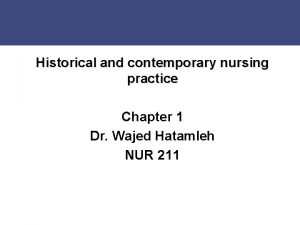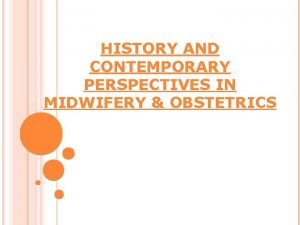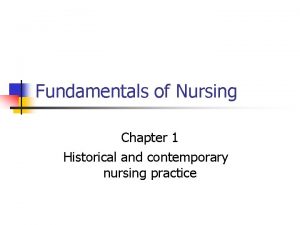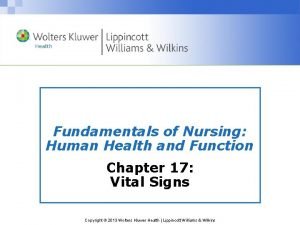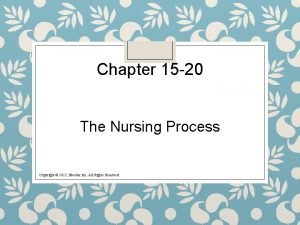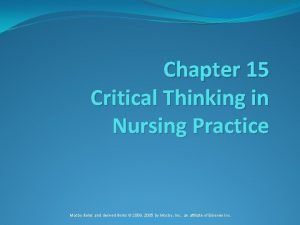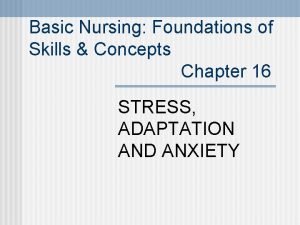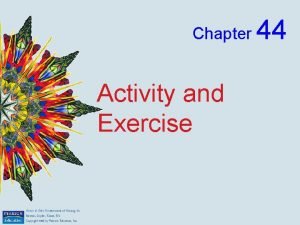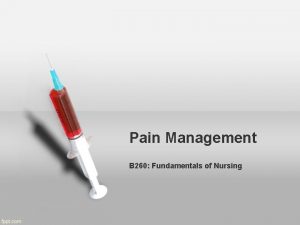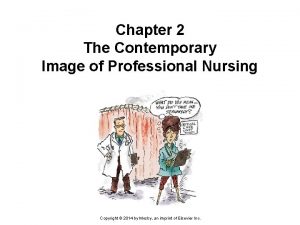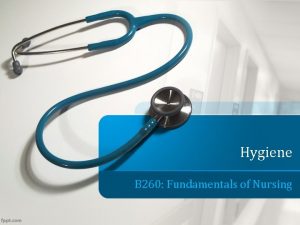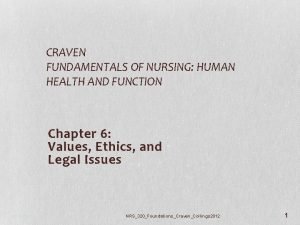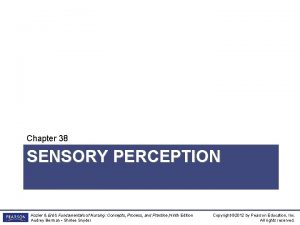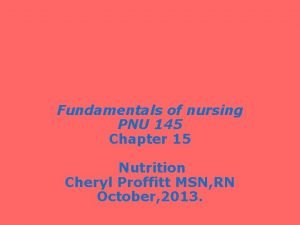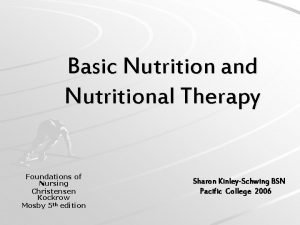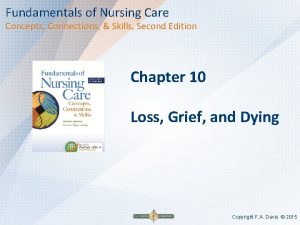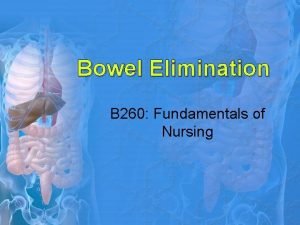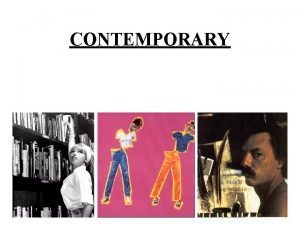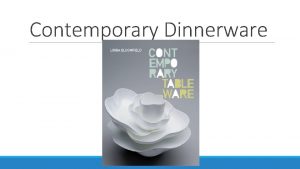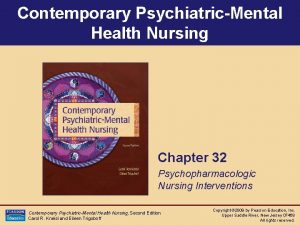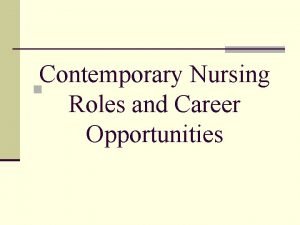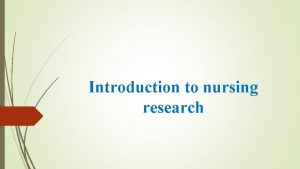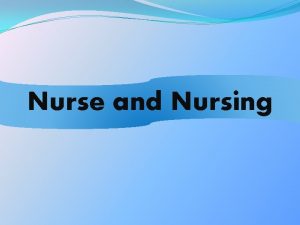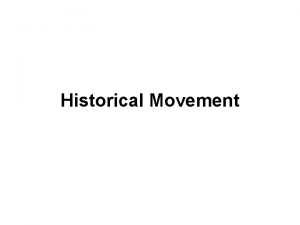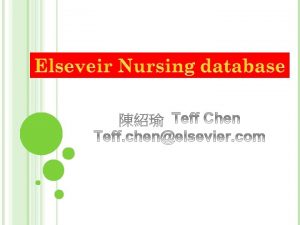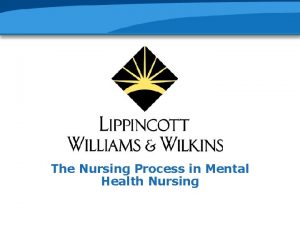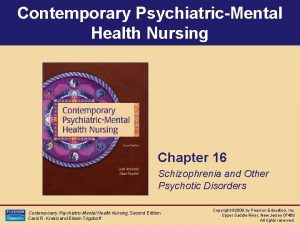Fundamentals of Nursing Chapter 1 Historical and contemporary





























- Slides: 29

Fundamentals of Nursing Chapter 1 Historical and contemporary nursing practice

Historical Perspectives Women’s Roles Traditional female roles of wife, mother, daughter, and sister have always included the care and nurturing of other family members. n n entailed humanistic caring, nurturing, comforting, and supporting.

Historical Perspectives Religion Christian value of “love thy neighbor as thyself Fabiola, converted to Christianity and used their wealth to provide houses of care and healing (the forerunner of hospitals) for the poor, the sick, and the homeless n n The Crusades saw the formation of several orders of knights, including the Knights of Saint John of Jerusalem (also known as the Knights Hospitalers), the Teutonic Knights, and the Knights of Saint Lazarus The deaconess groups Early religious values, such as self-denial, spiritual calling, and devotion to duty and hard work, have dominated nursing throughout its history

Historical Perspectives n n n War wars have accentuated the need for nurses During the Crimean War (1854– 1856) Florence Nightingale During the American Civil War (1861– 1865) Harriet Tubman and Sojourner Truth provided care and safety to slaves fleeing to the North on the Underground Railroad.

Historical Perspectives n n Societal Attitudes Before the mid-1800 s, nursing was without organization, education, or social status; the prevailing attitude was that a woman’s place was in the home and that no respectable woman should have a career. n In the early 1990 s, the Tri-Council for Nursing (the American Association of Colleges of Nursing, the American Nurses Association, the American Organization of Nurse Executives, and the National League for Nursing) initiated a national effort (titled “Nurses of America”) to improve the image of nursing.

Nursing Leaders n n n Nightingale (1820 – 1910) Florence Nightingale’s in improving the standards “Lady with the Lamp. ” producing and implementing public health policies n contributions to nursing education— perhaps her greatest achievement—she is also recognized as nursing’s first scientist-theorist for her work Notes on Nursing: What It Is, and What It Is Not (1860/1969).

Nursing Leaders n n Barton (1821– 1912) Clara Barton a schoolteacher who volunteered as a nurse during the American Civil War organize the nursing services establishing the American Red Cross

Nursing Leaders n Richards (1841– 1930) Linda Richards

Nursing Leaders n Mahoney (1845– 1926) Mary Mahoney n First Black professional nurse in the United States (1879).

Nursing Leaders n Wald (1867– 1940) Lillian Wald n founder of American community nursing

Contemporary Nursing Practice n n n Definitions of Nursing “the act of utilizing the environment of the patient to assist him in his recovery” (Nightingale, 18601969). n , “The unique function of the nurse is to assist the individual, sick or well, in the performance of those activities contributing to health or its recovery (or to peaceful death) that he would perform unaided if he had the necessary strength, will, or knowledge, and to do this in such a way as to help him gain independence as rapidly as possible”

Contemporary Nursing Practice n Definitions of Nursing In the latter half of the 20 th century n n n n Nursing is caring. Nursing is an art. Nursing is a science. Nursing is client centered. Nursing is holistic. Nursing is adaptive. Nursing is concerned with health promotion, health maintenance, and health restoration. Nursing is a helping profession.

Definitions of Nursing In the latter half of the 20 th century n “Nursing is the protection, promotion, and optimization of health and abilities, preventions of illness and injury, alleviation of suffering through the diagnosis and treatment of human response, and advocacy in the care of individuals, families, communities, and populations” (ANA, 2003, p. 6).

Recipients of Nursing n n A consumer is an individual, a group of people, or a community that uses a service or commodity A patient is a person who is waiting for or undergoing medical treatment and care. The word patient comes from a Latin word meaning “to suffer” or “to bear. ” n A client is a person who engages the advice or services of another who is qualified to provide this service. The term client presents the receivers of health care as collaborators in the care, that is, as people who are also responsible for their own health.

Scope of Nursing n n Promoting Health and Wellness Preventing Illness Restoring Health Caring for the Dying n n n Providing direct care to the ill person, such as administering medications, baths, and specific procedures and treatments Performing diagnostic and assessment procedures, such as measuring blood pressure and examining feces for occult blood Consulting with other health care professionals about client problems Teaching clients about recovery activities, such as exercises that will accelerate recovery after a stroke Rehabilitating clients to their optimal functional level following physical or mental illness, injury, or chemical addiction

Settings for Nursing n n n clients’ homes community agencies ambulatory clinics long-term care facilities health maintenance organizations nursing practice centers n n Primary settings Secondary settings Tertiary settings Others (resps)

Nurse Practice Acts n legal acts for professional nursing practice, regulate the practice of nursing and to protect the public

Standards of Nursing Practice n Standards of Practice describes the responsibilities for which nurses are accountable

Roles and Functions of the Nurse n n n Caregiver Communicator Teacher Client Advocate : acts to protect the client Counselor: the process of helping a client to recognize and cope with stressful psychologic or social problems, to develop improved interpersonal relationships, and to promote personal growth. It involves providing emotional, intellectual, and psychologic support n n n Change Agent Leader Manager Case Manager Research Consumer Expanded Career Roles such as Nurse Practitioner, researchers, educator, administrator.

Characteristics of the profession n n n Specialized Education Body of Knowledge Service Orientation Ongoing Research Code of Ethics Autonomy Professional Organization

Socialization to Nursing n Real world practice n Socialization can be defined simply as the process by which people (a) learn to become members of groups and society and (b) learn the social rules defining relationships into which they will enter. Socialization involves learning to behave, feel, and see the world in a manner similar to other persons occupying the same role as oneself (Hardy & Conway, 1988, p. 261).

Benner’s Stages of Nursing Expertise n STAGE I, NOVICE: No experience (e. g. , nursing student). Performance is limited, inflexible, and governed by context-free rules and regulations rather than experience.

Benner’s Stages of Nursing Expertise n n STAGE II, ADVANCED BEGINNER Demonstrates marginally acceptable performance. Recognizes the meaningful “aspects” of a real situation. Has experienced enough real situations to make judgments about them.

Benner’s Stages of Nursing Expertise n n STAGE III, COMPETENT Has 2 or 3 years of experience. Demonstrates organizational and planning abilities. Differentiates important factors from less important aspects of care. Coordinates multiple complex care demands.

Benner’s Stages of Nursing Expertise n n STAGE IV, PROFICIENT Has 3 to 5 years of experience. Perceives situations as wholes rather than in terms of parts, as in Stage II. Uses maxims as guides for what to consider in a situation. Has holistic understanding of the client, which improves decision making. Focuses on longterm goals.

Benner’s Stages of Nursing Expertise n n STAGE V, EXPERT Performance is fluid, flexible, and highly proficient; no longer requires rules, guidelines, or maxims to connect an understanding of the situation to appropriate action. Demonstrates highly skilled intuitive and analytic ability in new situations. Is inclined to take a certain action because “it felt right. ”

FACTORS INFLUENCING CONTEMPORARY NURSING PRACTICE n n n Economics Consumer Demands Family Structure Science and Technology Information and Telecommunications Legislation n n Demography The Current Nursing Shortage

Nursing Organizations n n The American Nurses Association (ANA) is the national professional organization for nursing in the United States and founded in 1896. Sigma Theta Tau, the international honor society in nursing, was founded in 1922 n n The National League for Nursing (NLN), formed in 1952, is an organization of both individuals and agencies. The International Council of Nurses (ICN) was established in 1899.

n n jnc@ jnc. gov. jo http: //www. jnmc. jo
 Historical and contemporary nursing practice
Historical and contemporary nursing practice History of midwifery slideshare
History of midwifery slideshare Contemporary realistic fiction vs historical fiction
Contemporary realistic fiction vs historical fiction Fundamentals chapter 1
Fundamentals chapter 1 Chapter 17 fundamentals of nursing
Chapter 17 fundamentals of nursing Back channeling nursing
Back channeling nursing Kataoka-yahiro and saylor's model
Kataoka-yahiro and saylor's model Fundamentals of nursing chapter 16
Fundamentals of nursing chapter 16 Historical perspective of nursing process
Historical perspective of nursing process Activity and exercise fundamentals of nursing
Activity and exercise fundamentals of nursing Pain management goals for nurses
Pain management goals for nurses Contemporary nursing image
Contemporary nursing image Evolution of community health nursing
Evolution of community health nursing How to wash a bedridden patients hair
How to wash a bedridden patients hair Types of hospital admission
Types of hospital admission Fundamentals of nursing craven
Fundamentals of nursing craven Sensory functioning fundamentals of nursing
Sensory functioning fundamentals of nursing Purpose of malnutrition
Purpose of malnutrition Fundamentals of nursing nutrition
Fundamentals of nursing nutrition Elimination needs
Elimination needs What are the 5 vital signs
What are the 5 vital signs Fundamentals of nursing care concepts connections & skills
Fundamentals of nursing care concepts connections & skills Position in nursing foundation
Position in nursing foundation Bedpan placement
Bedpan placement Chapter 73 tire wheel and wheel bearing fundamentals
Chapter 73 tire wheel and wheel bearing fundamentals Understanding your health and wellness chapter 1
Understanding your health and wellness chapter 1 Forensic science fundamentals and investigations chapter 6
Forensic science fundamentals and investigations chapter 6 Understanding health and wellness
Understanding health and wellness Nursing care models
Nursing care models Fundamentals of electric circuits chapter 4 solutions
Fundamentals of electric circuits chapter 4 solutions
